Analysis of a Vibrating Motor Considering Electrical, Magnetic, and Mechanical Coupling Effect
Abstract
1. Introduction
2. Analysis Method
2.1. Electrical and Magnetic Analysis
2.2. Mechanical Analysis
2.3. Electrical, Magnetic, and Mechanical Coupling Analysis
3. Experiment
4. Conclusions
Author Contributions
Funding
Conflicts of Interest
References
- Hwang, S.M.; Lee, H.J.; Chung, S.U.; Hwang, G.Y.; Kang, B.S. Development of solenoid-type vibrators used for mobile phones. IEEE Trans. Magn. 2003, 39, 3262–3264. [Google Scholar] [CrossRef]
- Park, J.H.; Sun, P.; Kwon, J.H.; Hwang, S.M. Optimal design of linear vibrators used in touch screen mobile phones. J. Mech. Sci. Technol. 2013, 27, 313–318. [Google Scholar] [CrossRef]
- Kim, J.H.; Park, I.O.; Oh, H.Y.; Choi, J.; Won, S.H. Development of the conical spring linear vibrator (CSLV) for mobile phone. In Proceedings of the 2005 IEEE International Magnetics Conference (INTERMAG), Nagoya, Japan, 4–8 April 2005; pp. 211–212. [Google Scholar]
- Wakiwaka, H.; Ezawa, M.; Kato, H.; Yoshimura, W.; Ito, H.; Fukuda, N.; Matsuhiro, K. Development of high-performance millimeter-size vibrator for cellular phones. J. Magn. Magn. Mater. 2002, 242, 1195–1197. [Google Scholar] [CrossRef]
- Pyo, D.; Yang, T.H.; Ryu, S.; Kwon, D.S. Novel linear impact-resonant actuator for mobile applications. Sens. Actuators A Phys. 2015, 233, 460–471. [Google Scholar] [CrossRef]
- Nam, J.; Yeon, T.; Jang, G. Development of a linear vibration motor with fast response time for mobile phones. Microsyst. Technol. 2014, 20, 1505–1510. [Google Scholar] [CrossRef]
- Nam, J.; Oh, H.; Jang, G. Externally leveraged resonant piezoelectric actuator with fast response time for smart devices. IEEE/ASME Trans. Mech. 2016, 21, 2764–2772. [Google Scholar] [CrossRef]
- Nam, J.; Kim, Y.; Jang, G. Resonant piezoelectric vibrator with high displacement at haptic frequency for smart devices. IEEE/ASME Trans. Mech. 2016, 21, 394–401. [Google Scholar] [CrossRef]
- Halmai, A.; Lukács, A. New linear-electromagnetic actuator used for cellular phones. Period. Polytech. Mech. Eng. 2007, 51, 19–22. [Google Scholar] [CrossRef][Green Version]
- Olaru, R.; Arcire, A.; Petrescu, C.; Mihai, M.M.; Gîrtan, B. A novel vibration actuator based on active magnetic spring. Sens. Actuators A Phys. 2017, 264, 11–17. [Google Scholar] [CrossRef]
- Lee, K.B.; Kim, J.H.; Kim, J.H. 1108. Horizontal linear vibrating actuator to reduce smart phone thickness. J. Vibroeng. 2013, 15, 2003–2011. [Google Scholar]
- Hedges, M.J.D.; Lam, Y. Accuracy of fully coupled loudspeaker simulation using COMSOL. In Proceedings of the COMSOL Conference 2009, Milan, Italy, 14–16 October 2009. [Google Scholar]
- Salvatti, A. virtual acoustic prototyping—Practical applications for loudspeaker development. In Proceedings of the Audio Engineering Society Convention 129. Audio Engineering Society, San Francisco, CA, USA, 4–7 November 2010. [Google Scholar]
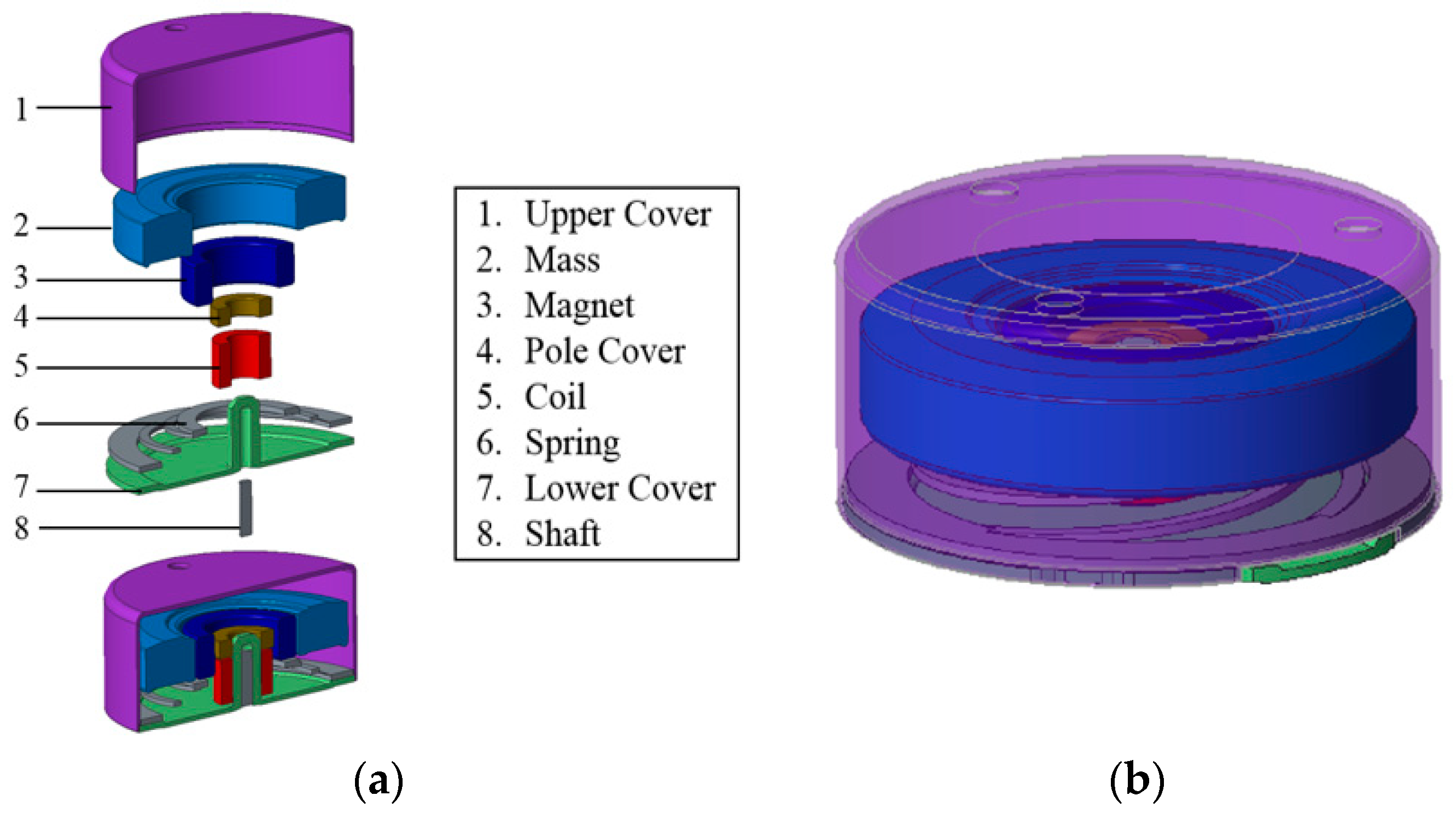
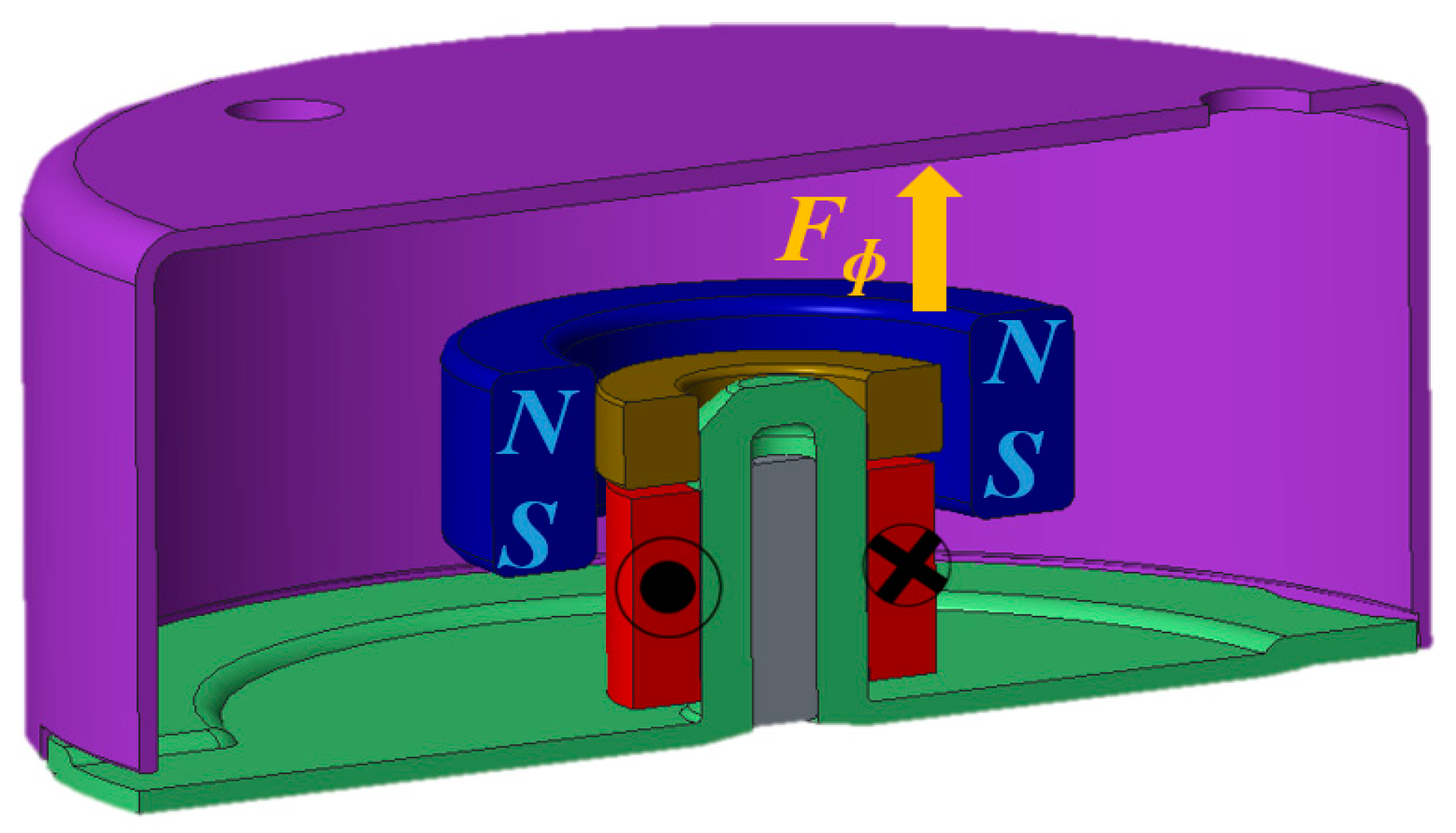
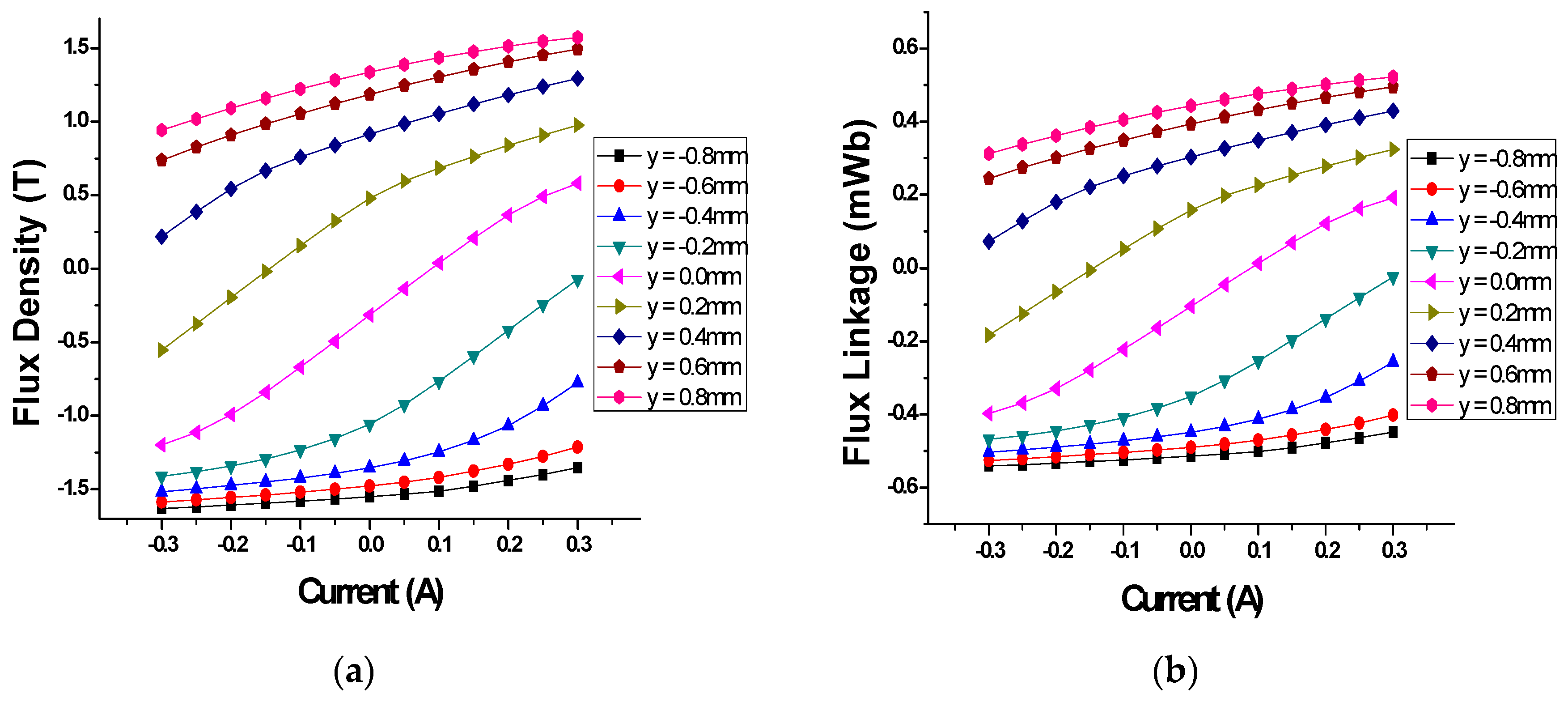
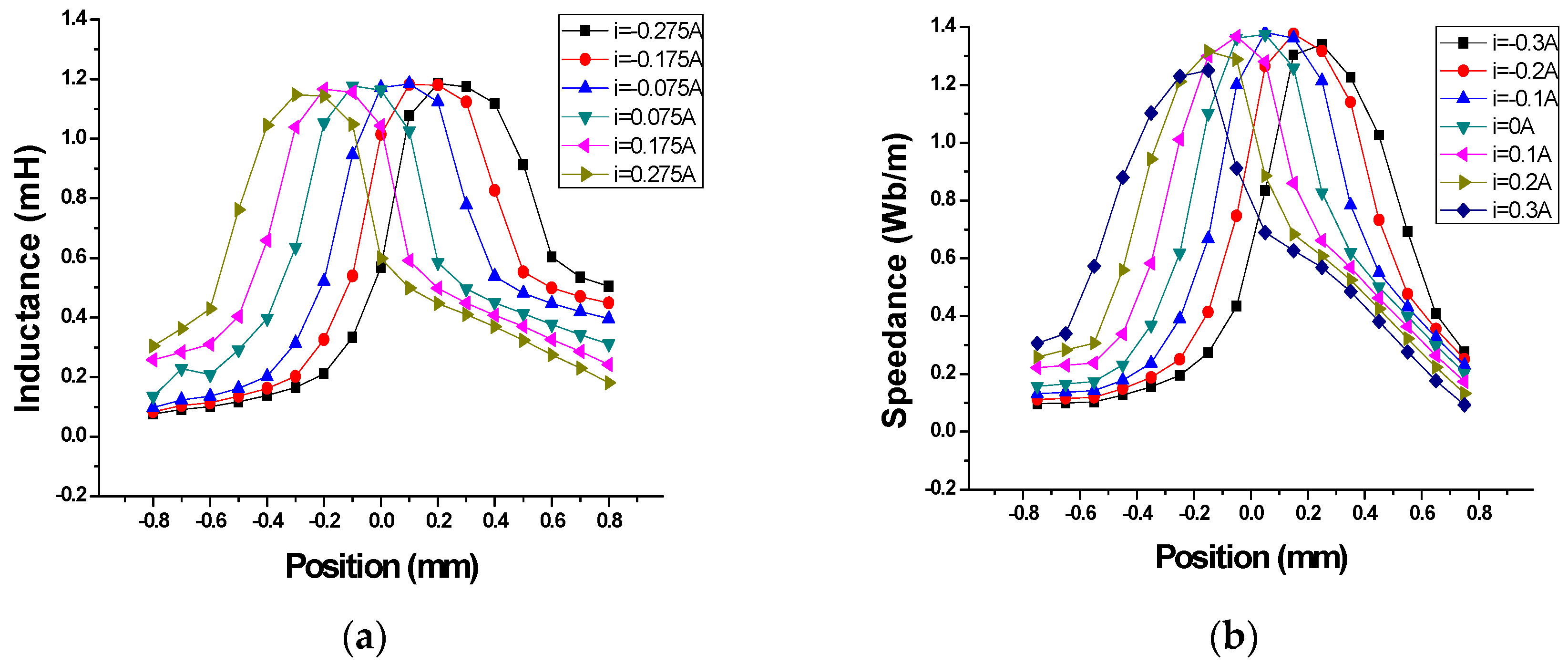
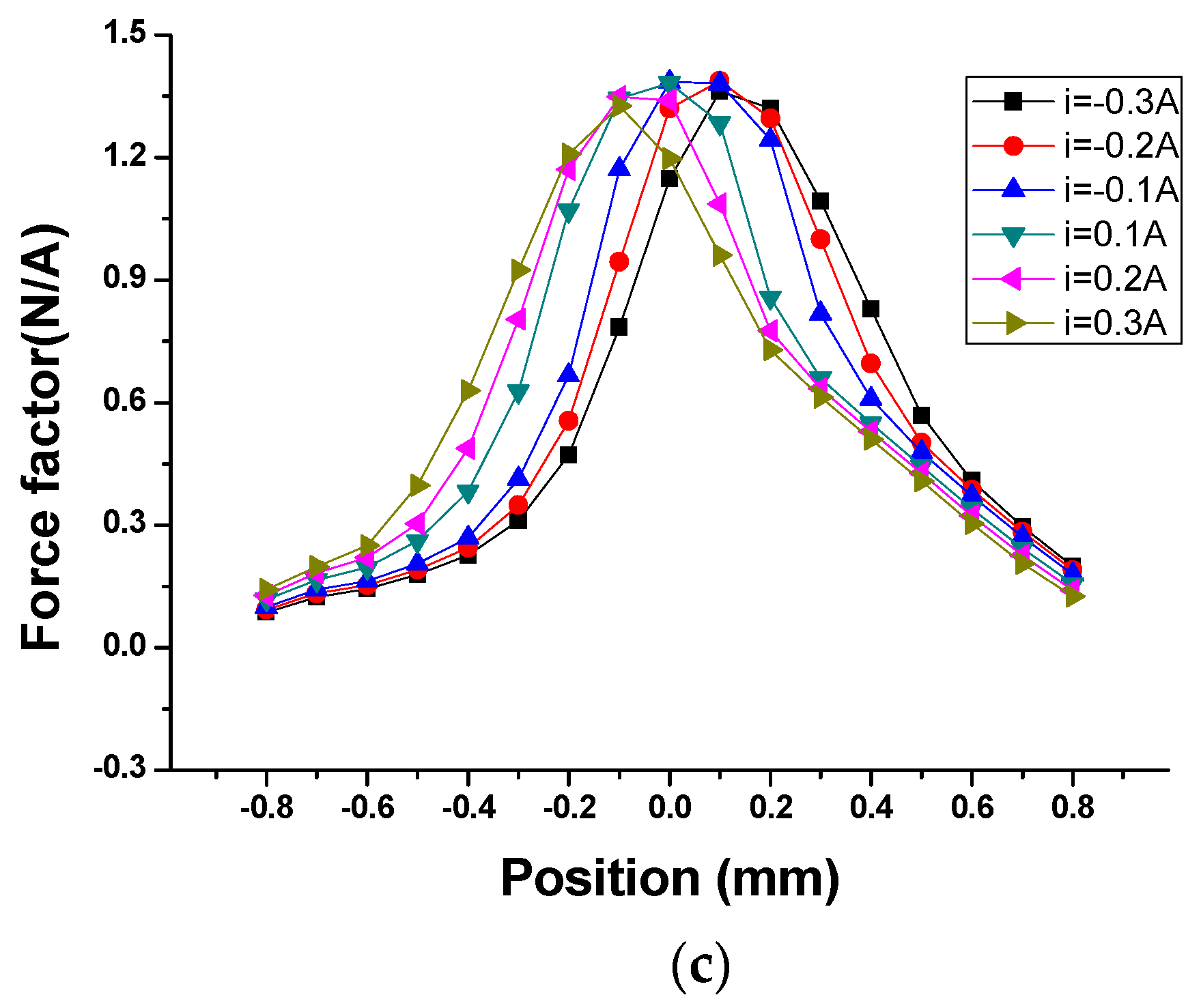
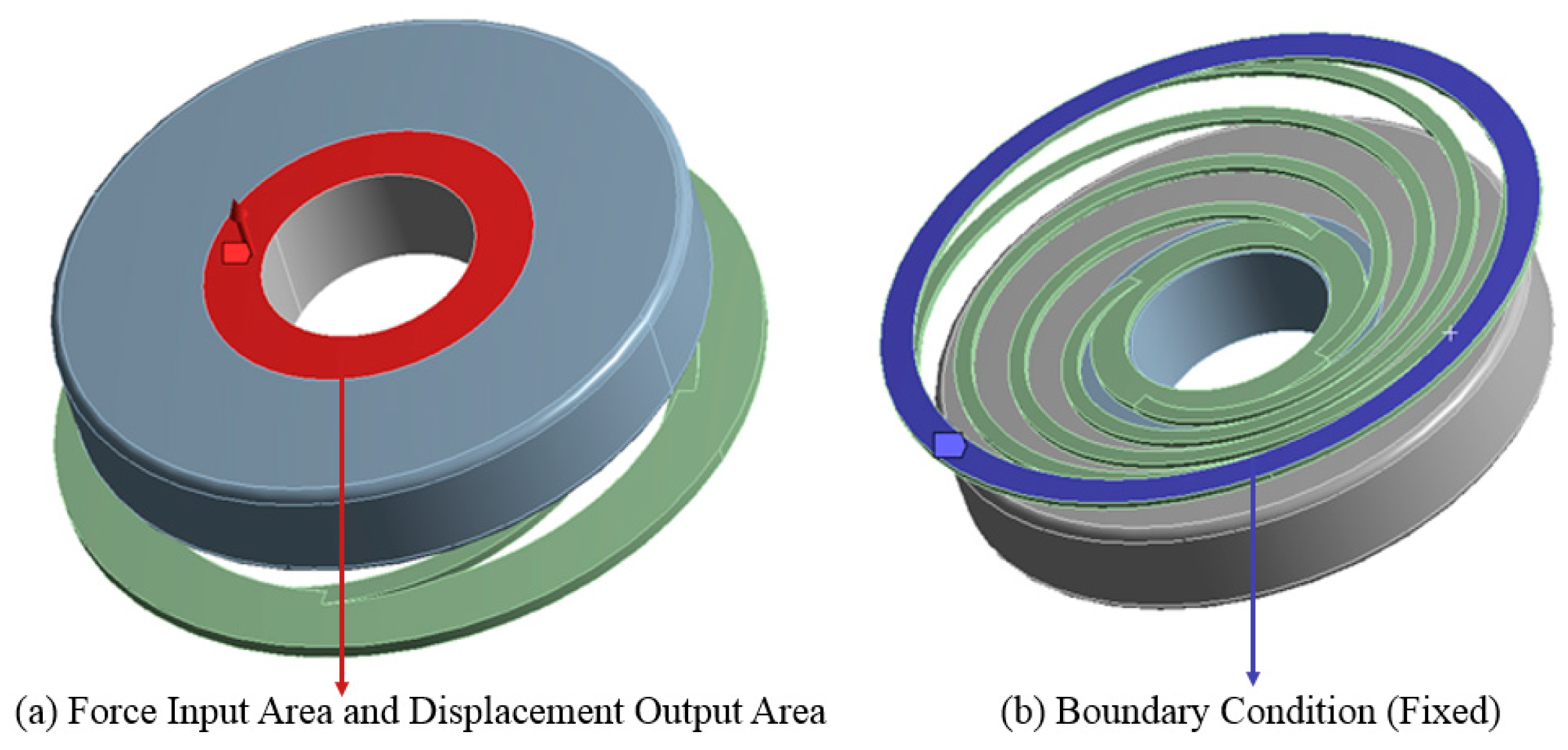
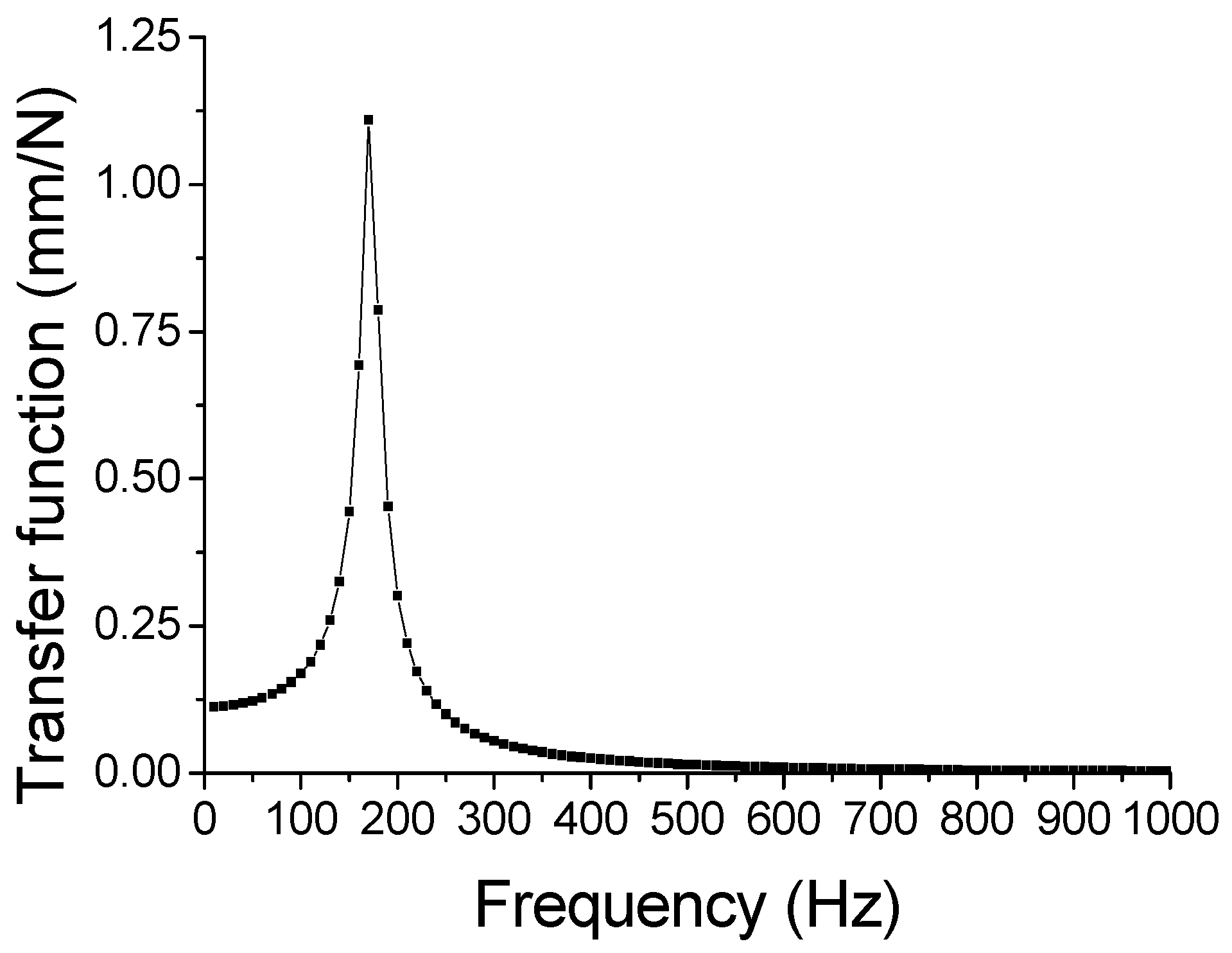
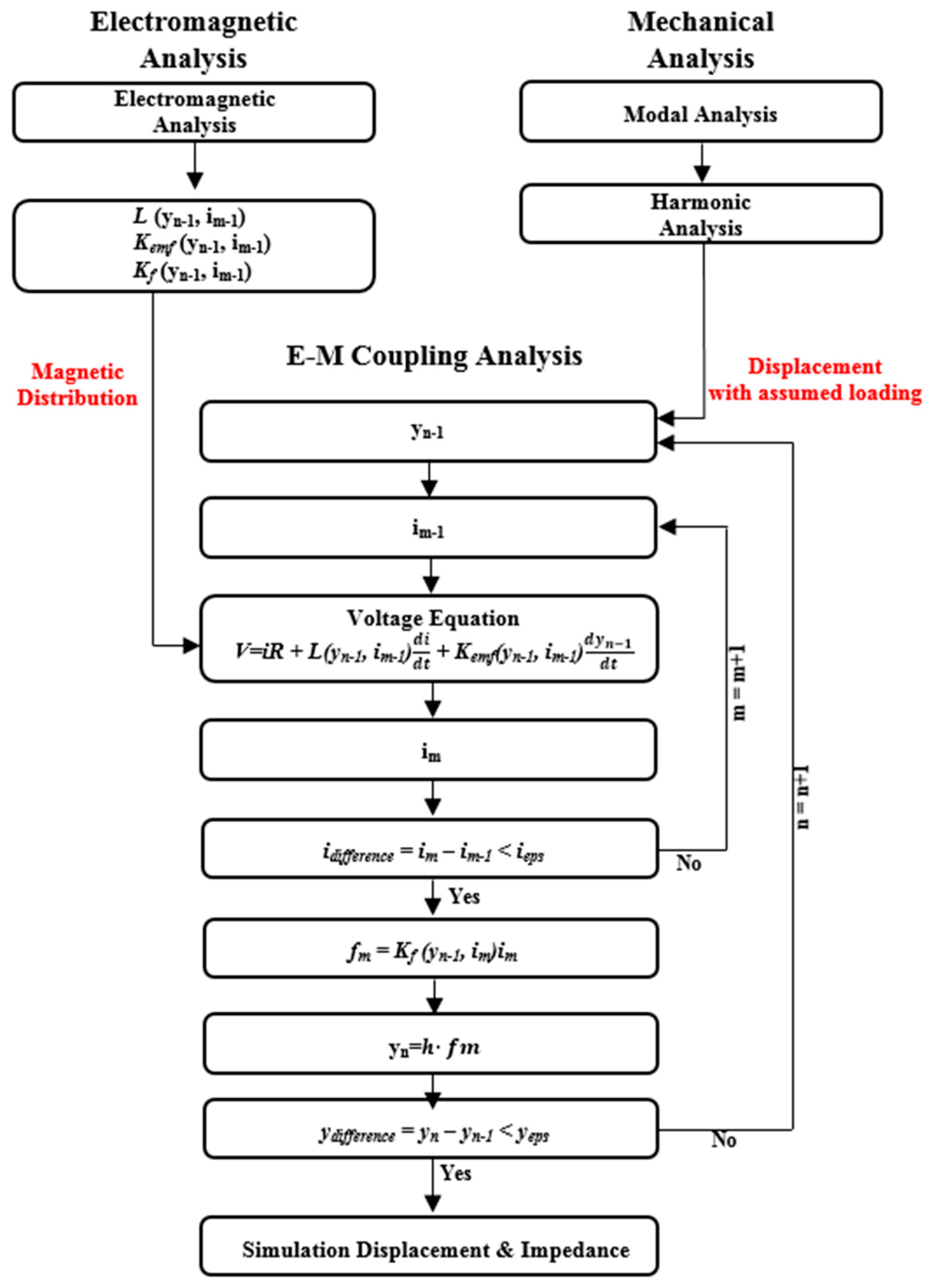
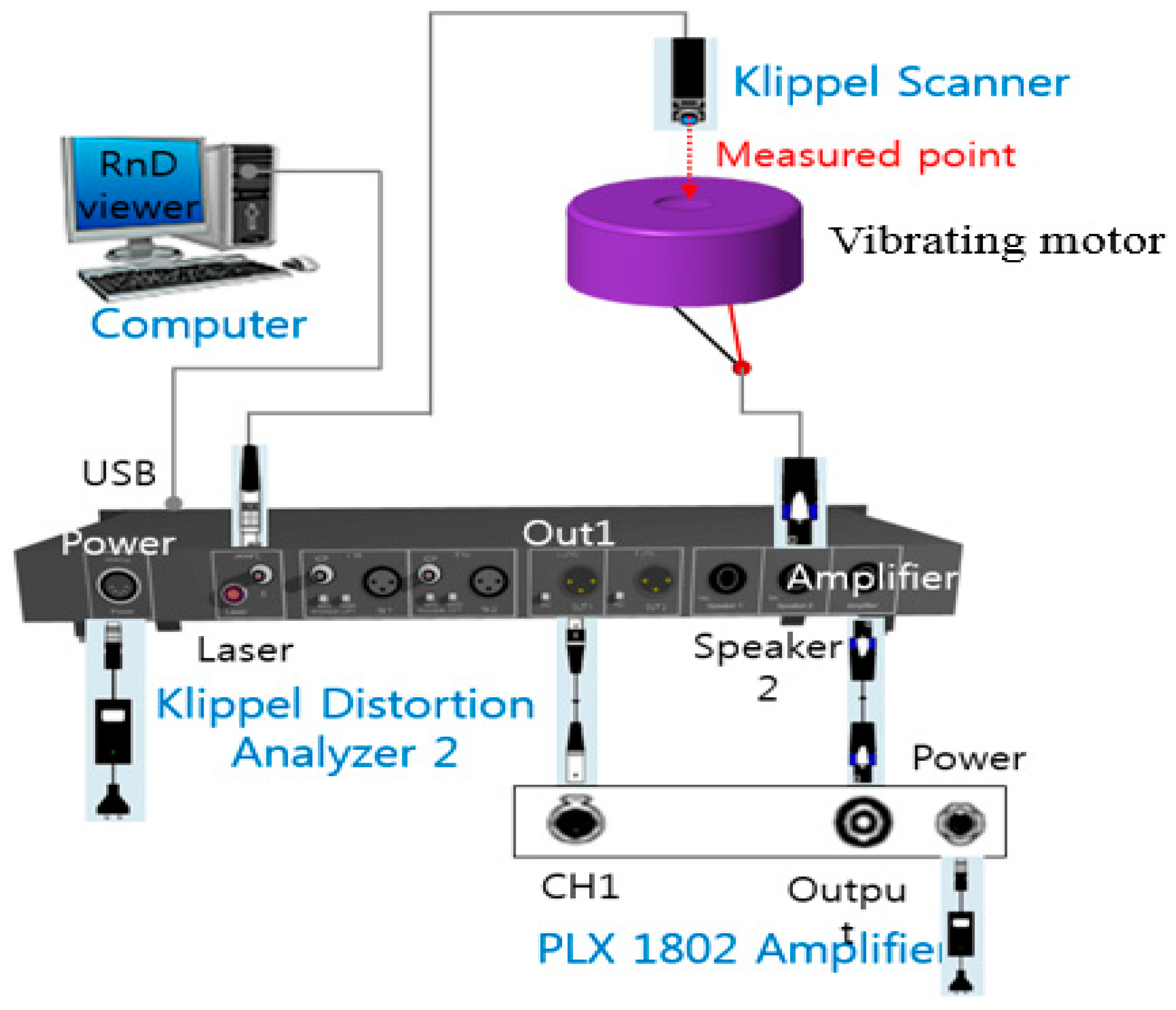

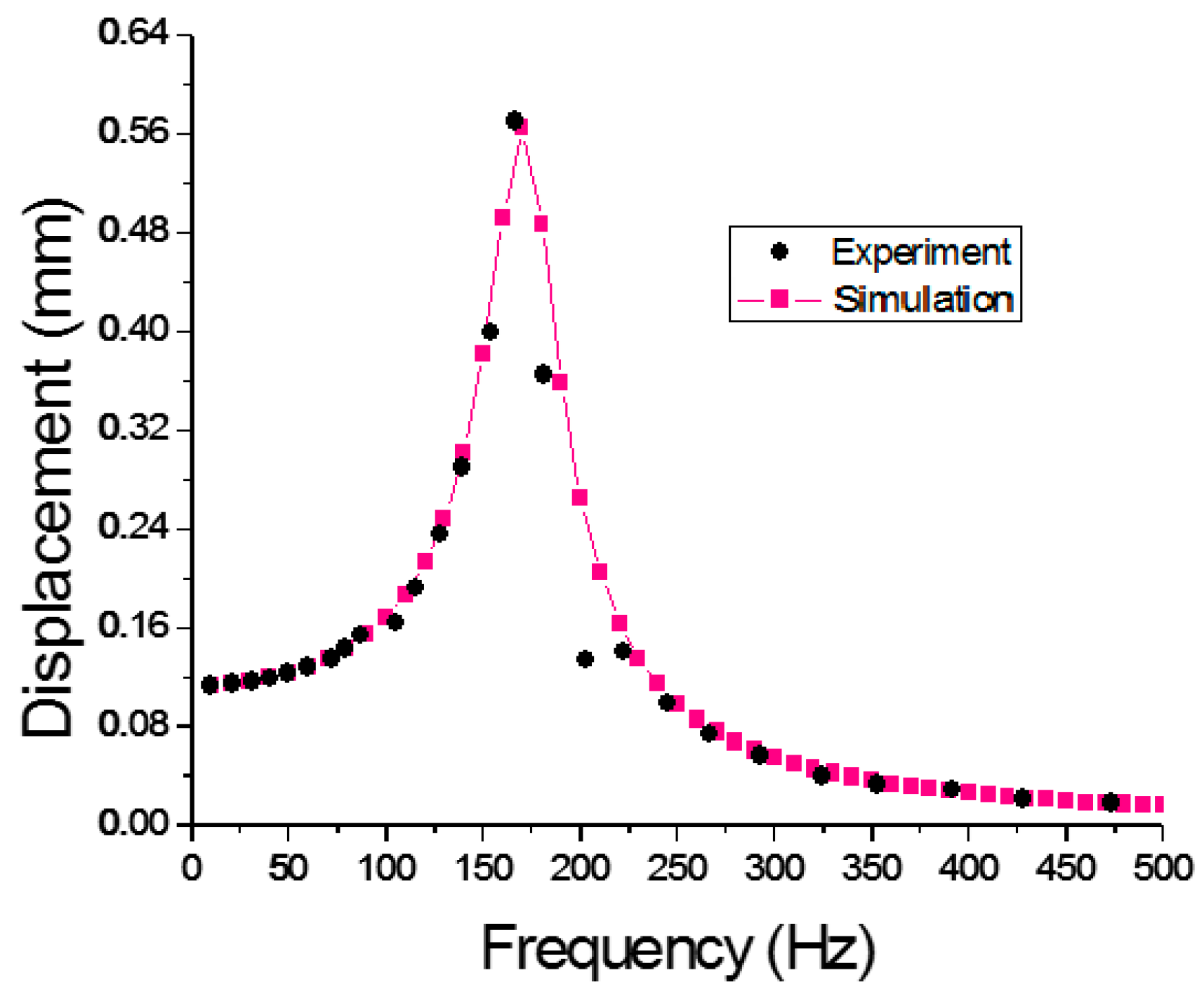
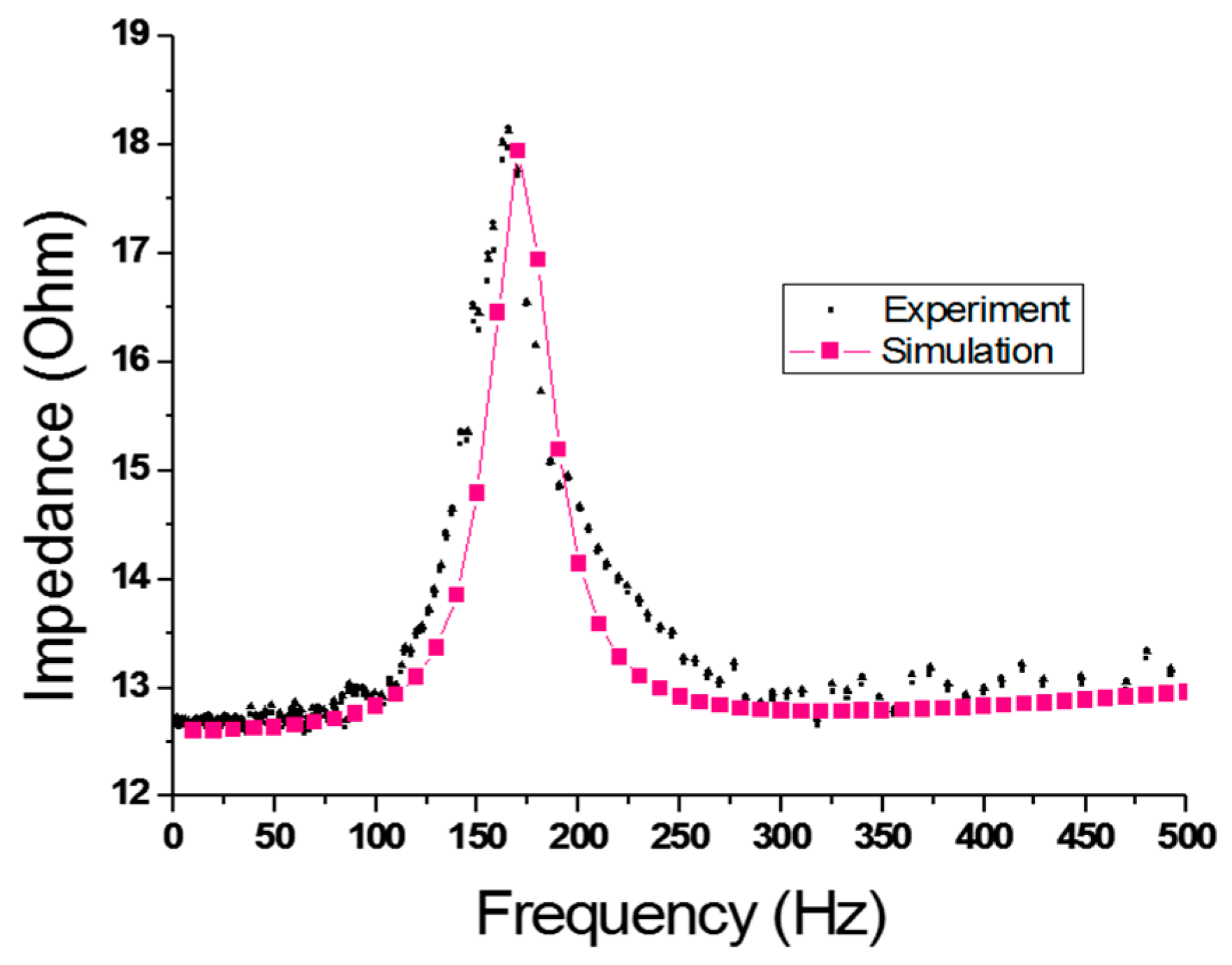
| Method | Strength | Weakness |
|---|---|---|
| ECM | Fast | No consideration of nonlinear parameters |
| Commercial software | Easy to use | No consideration of nonlinear parameters |
| Proposed method | Consideration of nonlinear parameters | Requires complex post-processing |
© 2019 by the authors. Licensee MDPI, Basel, Switzerland. This article is an open access article distributed under the terms and conditions of the Creative Commons Attribution (CC BY) license (http://creativecommons.org/licenses/by/4.0/).
Share and Cite
Kim, J.-H.; Jiang, Y.-W.; Hwang, S.-M. Analysis of a Vibrating Motor Considering Electrical, Magnetic, and Mechanical Coupling Effect. Appl. Sci. 2019, 9, 1434. https://doi.org/10.3390/app9071434
Kim J-H, Jiang Y-W, Hwang S-M. Analysis of a Vibrating Motor Considering Electrical, Magnetic, and Mechanical Coupling Effect. Applied Sciences. 2019; 9(7):1434. https://doi.org/10.3390/app9071434
Chicago/Turabian StyleKim, Jun-Hyung, Yuan-Wu Jiang, and Sang-Moon Hwang. 2019. "Analysis of a Vibrating Motor Considering Electrical, Magnetic, and Mechanical Coupling Effect" Applied Sciences 9, no. 7: 1434. https://doi.org/10.3390/app9071434
APA StyleKim, J.-H., Jiang, Y.-W., & Hwang, S.-M. (2019). Analysis of a Vibrating Motor Considering Electrical, Magnetic, and Mechanical Coupling Effect. Applied Sciences, 9(7), 1434. https://doi.org/10.3390/app9071434





